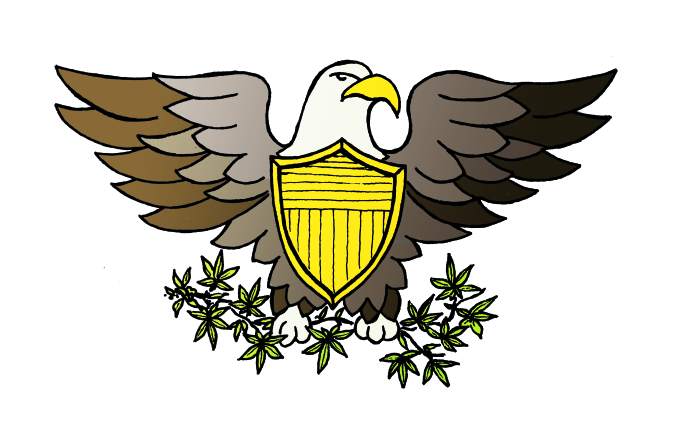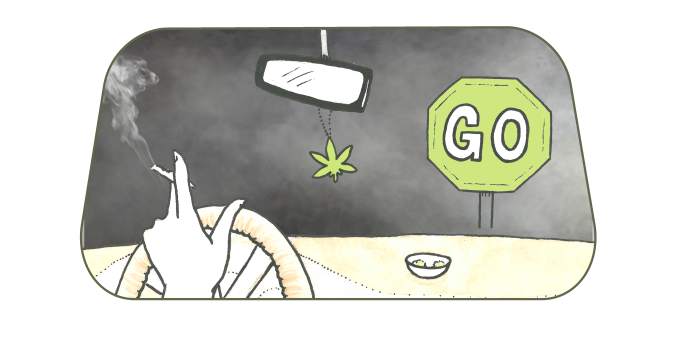The Grateful Dead celebrate five decades with five shows.
In this era of fly-by-night fame, one-hit wonders, and lame-ass reality “stars,” any group of artists who can create a true following over half a century needs to be recognized and respected. The Grateful Dead, the legendary improvisational stoner band, is celebrating its 50th anniversary with a five-show “Fare Thee Well” tour, which started June 27 in Santa Clara, Calif., and will wrap up July 5 at Soldier’s Field, Chicago. The long-sold-out shows (which will be streamed on YouTube) offer a chance to reflect on what makes this band so unique and beloved.
The original Grateful Dead consisted of lead singer and guitarist Jerry Garcia, rhythm guitarist Bob Weir, bass player Phil Lesh, drummer Bill Kreutzmann, and Ron “Pigpen” McKernan, a bluesy genius who played organ and harmonica. The group started under the name Warlocks in 1965, playing house parties during author Ken Kesey’s “acid tests.” (Drummer Mickey Hart and lyricist Robert Hunter were added in 1967, and Pigpen passed in 1973 when his liver gave out.)
Though I’m no Deadhead, I loved Garcia’s soulful, often mournful voice and damn fine picking (including his pedal-steel work on Crosby, Stills, and Nash’s “Teach Your Children”); so when Jerry passed in 1995 at age 53 from a heart attack (pretty good for a chain-smoking, fast-food-chowing heroin addict) I stopped paying attention. Not that the band needed me—hardcore fans have continued to follow the “Core Four” (aka the Walking Dead or Almost Dead): Weir, 67; Lesh, 75; and drummers Kreutzmann, 69, and Hart, 71. Joining them on the last hurrah will be singer/piano man Bruce Hornsby and Phish singer and kick-ass guitarist Trey Anastasio.
As has been well recorded, the Grateful Dead were most likely the original “jam band.” Never playing a tune the same way twice, the Dead performed songs that often went on for 30 minutes or more, filled with blues and hillbilly licks as well as spacey jazz and rock ’n’ roll. Though that formula may not fit the Top 40 format (the band’s only Top 10 hit was 1987’s “Touch of Grey”), the free-form nature of the sets dove-tailed nicely with the drug trips most listeners were taking. My favorite show was opened by Carlos Santana, and then turned into a strange journey of blurring colors and what I thought were flying sheep in the Tacoma Dome parking lot. (It should be noted that a sober group of Deadheads, the Wharf Rats, has been following the band for decades.)
Anyone old enough to be tripping and traveling the country in the ’60s has to be at least 60 by now, which makes Deadheads both a wonderful and dying breed. But behind the tie-dye and LSD and bootleg tapes comes a dedicated (deadicated?) vibe that’s still the backbone of the counterculture. Peace, love, and understanding are great notions for any generation. Tell me we couldn’t use a little more peace in the Middle East, love among our races, and understanding in our individual lives, no matter the situation.
And if ya think hippies are lazy stoners, take a hard look at the band members. They’ve toured pretty much nonstop in various forms since 1967 (including incarnations as the Other Ones, Further, RatDog, and the Dead), selling more than 35 million albums. Officially, the Guinness Book of World Records has the band etched in stone, with 2,318 live concerts (thus far) in front of a collective audience of more than 25 million, the most in history.
And if ya think hippies are a bunch of commie-pinkos, take another look. While they had wonderful progressive values (the loyal road crew were given both benefits and insurance), the gents were money-making ganjapreneurs long before the latest Green Rush. Led by Hal Kant, an entertainment lawyer who’s made Harvey Weinstein look demure, the Dead scored merchandising deals galore (have you tried the Steal Your Face wine?), and was one of the first acts to retain the ownership of its songs and all-important master tapes. The combo also didn’t put up with TicketBastards, forming their own ticketing company and raking in more than $300 million. The band was always socialistic when it came to bootlegs, allowing fans to record and trade at will . . . so long as they weren’t sold.
Of course it wasn’t just the band that made money—an entire village of traveling artists and vendors (and dope-dealers and massage therapists) followed the group from town to town for decades on end. I’ve got the Tibetan prayer flags flying off my deck to prove it. For a band that spent so much time rocking in a bygone era, their music has been carefully preserved and modernized, going from tapes and reel-to-reel systems to a digital library called The Internet Archive (archive.org), which contains 8,976 recordings of the Grateful Dead. If you’ve never really heard the band, do yourself a favor and scroll to, say, 1973 and click on one of the concert links. You may find yourself on a long strange trip, indeed.





